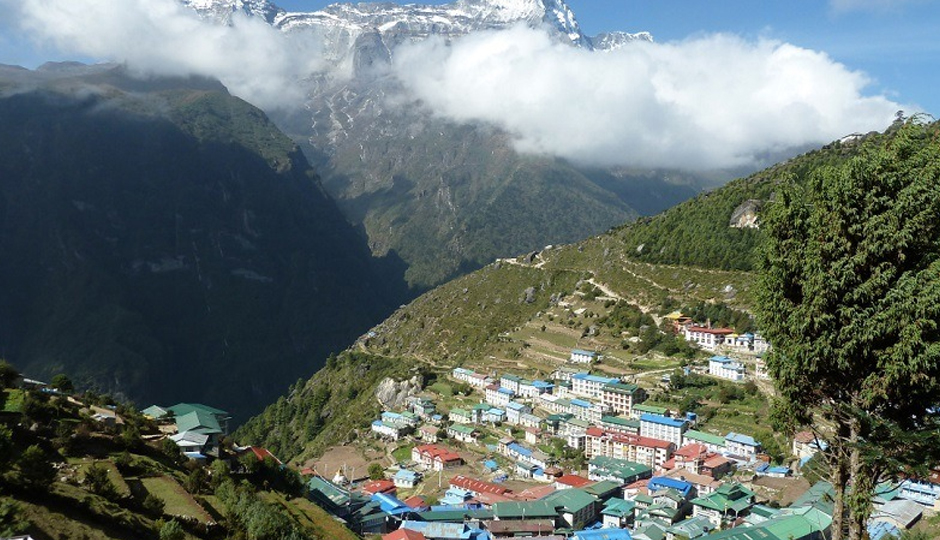Amazing History Of Padmanabha Swamy Temple
By: Priyanka Maheshwari Tue, 05 Sept 2023 11:48:39
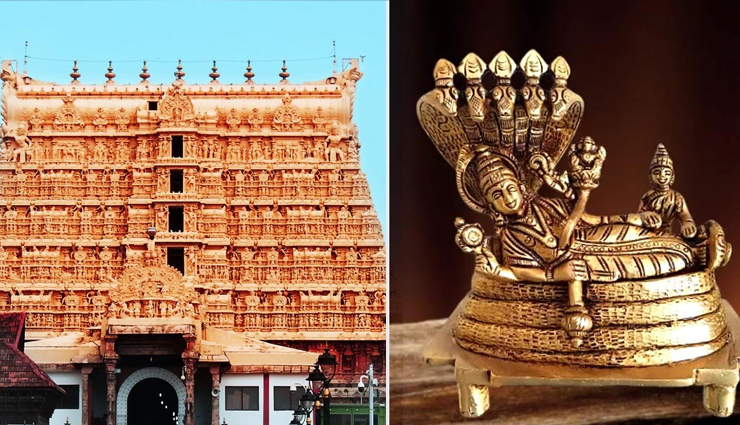
Situated in the heart of Thiruvananthapuram, Kerala, the Padmanabhaswamy temple stands as a testament to the revered Vaishnav culture within Hinduism.
This temple's grandeur is evident through its gilded adornments, underscoring its profound influence on Vaishnavites. Remarkably well-preserved, its historical roots trace back to the 8th century, endowing it with the distinction of being one of the most ancient Hindu temples.
Sri Padmanabhaswamy finds mention in various religious scriptures, emphasizing its profound significance. Since 2011, when a speculated treasure trove was discovered in its concealed vault, it has gained fame as one of the world's wealthiest places of worship. The temple also maintains an aura of mystique, with enduring stories of hidden riches, or perhaps even dangers, circulating throughout the region for generations.
Beyond its outward appearance, the Padmanabhaswamy temple holds a wealth of secrets waiting to be explored.
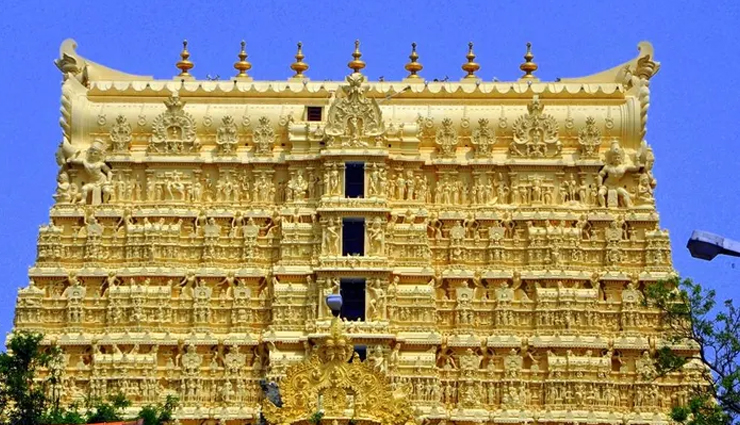
History of the Temple
The temple's origin and the identity of the individual who consecrated its symbol remain shrouded in mystery for historians, with no documented sources shedding light on its construction. Nevertheless, numerous Hindu religious scriptures, such as the Matsya Purana, Varah Purana, Brahma Purana, Skanda Purana, Padma Purana, Vayu Purana, and the Mahabharata, make references to this temple.
Historical records from the Sangam period of literature, spanning from 500 BCE to 300 CE, provide some insights into the Padmanabha Swamy temple. During this era, it was known as "The Golden Temple," and historians believe it possessed unimaginable wealth at that time.
The temple's most significant royal association came during the 18th century under the Travancore dynasty. King Anizham Thirunal oversaw the final major renovation of the temple complex in 1731 CE and reconsecrated the sacred idols of the deity. In 1750, the king dedicated the entire Travancore kingdom to Padmanabhaswamy temple and pledged that his descendants would rule only on behalf of the deity.
From that point onward, the rulers of Travancore carried the title of Padmanabha Dasa. At present, the administration of the temple is overseen by the Ettara Yogam, a council consisting of the head priest, six members of the Thiruvananthapurathu committee, a secretary, and the titular king of Travancore.
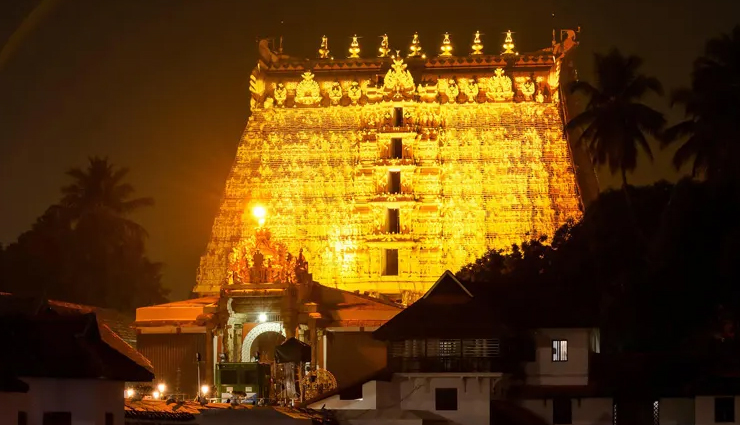
Stories Associated with the Temple
The Padmanabhaswamy Temple boasts a wealth of captivating stories, one of which harks back to the Dwapar Yuga, chronicled in the Brahmanda Puranam. According to this narrative, the temple's deity was consecrated by the warrior sage Parashurama, who entrusted the temple's administration (Kshetra Karyam) to seven Potti families, a branch of Brahmins.
Parashurama also appointed King Adithya Vikrama of Vanchi as the guardian (Paripalanam) of the Temple, while the sage bestowed the ritual rights (tantram) of the temple upon Tharananallur Namboothiripad.
Another intriguing tale linked to the temple revolves around the revered saint Vilvamangalathu Swamiyar, who once resided near the Ananthapuram Temple in Kasargod. Swamiyar, an ardent devotee of Lord Vishnu, devoted much of his life to worshipping the deity. On one occasion, he fervently prayed for a glimpse (Darshan) of the Lord.
In response to his prayers, Lord Vishnu visited Swamiyar in the guise of a mischievous young boy who playfully defiled the sacred idol, unwittingly provoking the sage's anger. Unaware of the boy's divine nature, Swamiyar chased him away. It was only later that Swamiyar realized the true identity of the boy as Lord Vishnu himself. Overwhelmed with remorse, he beseeched the deity for another Darshan.
Lord Vishnu summoned him to the Anathavana, a dense forest in Ananthakadu. After an extensive search and inquiry with a local woman, the sage eventually located the boy, who then transformed into a colossal image of the Lord, too immense to be perceived in a single glance.
Upon Swamiyar's request, Lord Vishnu assumed a smaller form, resulting in the creation of the idol that now resides in the temple. With the assistance of the reigning king and a group of Brahmins, the sage constructed a temple and consecrated the idol, forever enshrining this divine encounter in the temple's rich history.
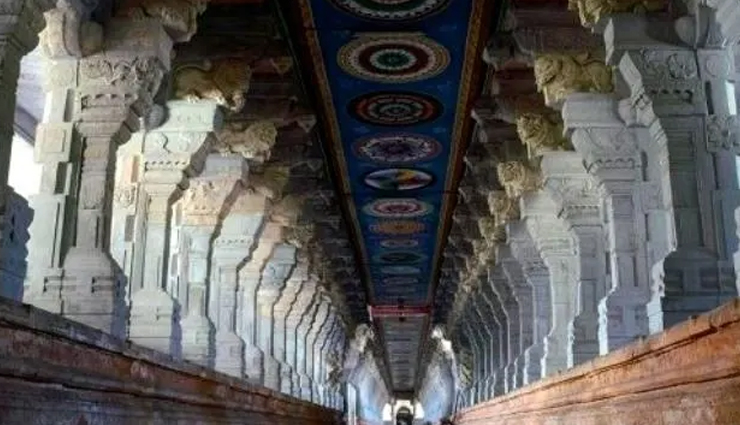
Temple Architecture
The Padmanabhaswamy temple showcases a captivating blend of Kerala and Dravidian architectural styles. Adorned with stunning murals and paintings, its substantial stone walls exemplify the expertise in Tamilian temple architecture. Situated alongside the Padma teertham tank, the temple boasts a seven-storied, 100-foot-tall Gopuram (temple tower) designed in the Pandyan architectural tradition.
Upon entering the temple, visitors are struck by the exquisite craftsmanship in the long corridors, featuring 365¼ meticulously sculpted granite pillars adorned with intricate carvings. Another noteworthy architectural highlight is the Navagraha Mandapa, where the ceiling intricately depicts the nine planets of the solar system.
Within the Garbhagraha (Sanctorum), the primary deity, Sri Padmanabha, reclines in the Anantha Sayanam (sleeping) position atop the majestic seven-headed sacred serpent. Additionally, one can observe idols of Goddess Lakshmi and Lord Brahma emerging from a lotus, encircling the deity.
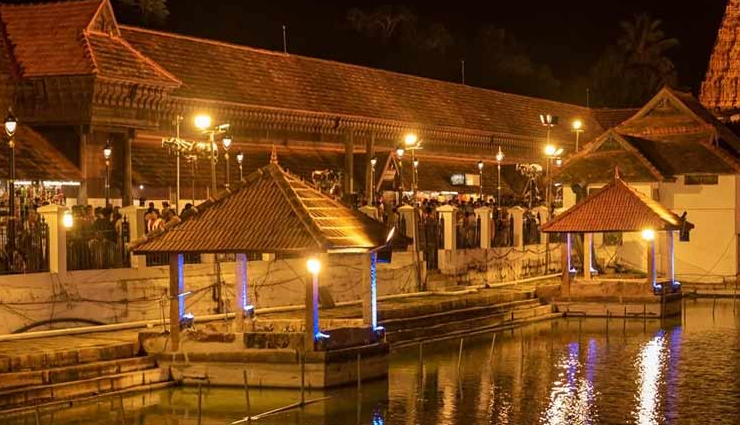
Religious Significance
The Padmanabhaswamy temple carries profound religious significance for both devout worshippers and historians alike. Sri Padmanabhaswamy holds a revered position among the 108 Divya Desams (Holy Abodes of Lord Vishnu), with the shrine receiving great praise in the Divya Prabandha. The 8th-century renowned Alwar poet Nammalvar, one of the twelve sacred Vaishnavite poets, composed numerous hymns expressing his unwavering devotion to the Lord.
This temple also finds mention in Hindu Vedic texts and epic narratives such as the Mahabharata. In the sacred scripture Srimad Bhagavata Geeta, a segment of the Mahabharata, it is recounted that Lord Balarama, the brother of Lord Krishna, visited this temple and made valuable offerings after purifying himself in the Padmatheertham.
Prominent musicians, writers, and scholars firmly believe that the temple's establishment dates back to the first day of Kali Yuga, approximately 5000 years ago. Many hold the conviction that this is the very place where Lord Vishnu granted Divya Darshan (divine vision) to legendary Hindu sages like Vilvamangalam Swami and Divakaruni.
Religious Ceremonies and Festivals
The Padmanabhaswamy temple draws thousands of devotees daily, all seeking blessings from Lord Vishnu. The Darshan, or sacred viewing of the deity, commences at 3:30 am and extends until 7:30 pm, encompassing various Poojas (worship rituals) throughout this duration. Among the Poojas conducted in the temple are the Ashtothararchana, Sahasranamarchana, Vedmanthrarchana, Bhagyasooktham, and several others. To ensure a smooth experience, it is advisable to pre-book a Pooja either at the temple office or through online channels, thus avoiding the rush.
In addition to the Poojas, the temple also observes various religious festivals with great enthusiasm-
* The Alpashy Festival: This is a semi-annual celebration occurring in both October-November and March-April (known as Panguni during the latter period). Over the course of ten days, numerous religious rituals and observances are conducted within the temple. On the 9th day, the titular king of Travancore leads a procession escorting Lord Vishnu and other deities to Vettakalam. This festival culminates with the Aarat, a sacred bath, of the deities at Shankumugham Beach, following which the idols are returned to the temple.
* Thiruvonam Festival: This festival commemorates the birth of Sri Padmanabhaswamy with grandiose celebrations. The temple is adorned like a bride, and a series of traditional customs and rituals are performed on the temple grounds to honor the deity.





